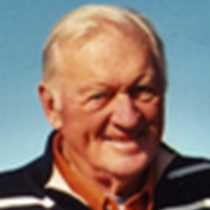Astoria, Oregon
History resonates in this small city at the Columbia River’s mouth. Chinook, Clatsop and Tillamook peoples moved in and out of the area for thousands of years. They hugged the shoreline and established temporary hunting and fishing camps. European sailors next explored the coast beginning in the 1700s. By the end of the 18th century several brave captains crossed the intimidating Columbia River bar and meandered upstream on what they thought was the true Northwest Passage. Lewis & Clark glided into the region aboard cumbersome dugouts in late 1805, followed by the Astor party in 1811. Today’s Astoria, despite its loss of a great salmon fishery and shrinking timber businesses, has re-emerged as a welcoming city with eye-filling views of one of nature’s greatest streams, the Columbia – or as the Indians called it, Niche Wauna.
Guests disembarked the Sea Bird at 9:00 AM to visit one of America’s finest maritime museums. By 10:30 AM motor coaches were en route to the Corps of Discovery’s third winter camp, Fort Clatsop. While traveling in the area or touring the reconstructed Fort, Sea Bird Staff and Clatsop Rangers outlined the histories of Astoria, the river, and Lewis & Clark’s rain-soaked visit in 1805-1806.
After lunch, with a sunny sky overhead (which was a treat considering Astoria’s ocean climate), Guests chose one of three options: 1) explore the charming byways of Astoria on their own; 2) board a motor coach to visit Cape Disappointment on the Washington side of the river; 3) board another motor coach to see the river’s mouth, jetties, and Coastal Range from Coxcomb Hill and the Astoria Column.
Visitors to the Cape perused a Lewis & Clark Interpretive Center and saw a stag mule deer roaming the brush. They also gazed over the wild mouth of the river and the famous Columbia Bar. Upon returning they visited the completed Confluence Project of sculptor Maya Lin (who designed the famous Vietnam Memorial in Washington, D.C.) which commemorates the Corps’ relationship with local Indian nations and the western-most point of their trek. Guests who chose to tour the town and Coxcomb Hill enjoyed a 180-degree overlook of the river, the 4.1-mile-long Astoria-Megler bridge, and the ponderous, careful traffic of deep water ships as they moved upriver.
Captain’s hour and dinner was preceded by a round-table of ad hoc comments from guests about their memories of the week during which they followed the far western path of Lewis & Clark.
History resonates in this small city at the Columbia River’s mouth. Chinook, Clatsop and Tillamook peoples moved in and out of the area for thousands of years. They hugged the shoreline and established temporary hunting and fishing camps. European sailors next explored the coast beginning in the 1700s. By the end of the 18th century several brave captains crossed the intimidating Columbia River bar and meandered upstream on what they thought was the true Northwest Passage. Lewis & Clark glided into the region aboard cumbersome dugouts in late 1805, followed by the Astor party in 1811. Today’s Astoria, despite its loss of a great salmon fishery and shrinking timber businesses, has re-emerged as a welcoming city with eye-filling views of one of nature’s greatest streams, the Columbia – or as the Indians called it, Niche Wauna.
Guests disembarked the Sea Bird at 9:00 AM to visit one of America’s finest maritime museums. By 10:30 AM motor coaches were en route to the Corps of Discovery’s third winter camp, Fort Clatsop. While traveling in the area or touring the reconstructed Fort, Sea Bird Staff and Clatsop Rangers outlined the histories of Astoria, the river, and Lewis & Clark’s rain-soaked visit in 1805-1806.
After lunch, with a sunny sky overhead (which was a treat considering Astoria’s ocean climate), Guests chose one of three options: 1) explore the charming byways of Astoria on their own; 2) board a motor coach to visit Cape Disappointment on the Washington side of the river; 3) board another motor coach to see the river’s mouth, jetties, and Coastal Range from Coxcomb Hill and the Astoria Column.
Visitors to the Cape perused a Lewis & Clark Interpretive Center and saw a stag mule deer roaming the brush. They also gazed over the wild mouth of the river and the famous Columbia Bar. Upon returning they visited the completed Confluence Project of sculptor Maya Lin (who designed the famous Vietnam Memorial in Washington, D.C.) which commemorates the Corps’ relationship with local Indian nations and the western-most point of their trek. Guests who chose to tour the town and Coxcomb Hill enjoyed a 180-degree overlook of the river, the 4.1-mile-long Astoria-Megler bridge, and the ponderous, careful traffic of deep water ships as they moved upriver.
Captain’s hour and dinner was preceded by a round-table of ad hoc comments from guests about their memories of the week during which they followed the far western path of Lewis & Clark.




